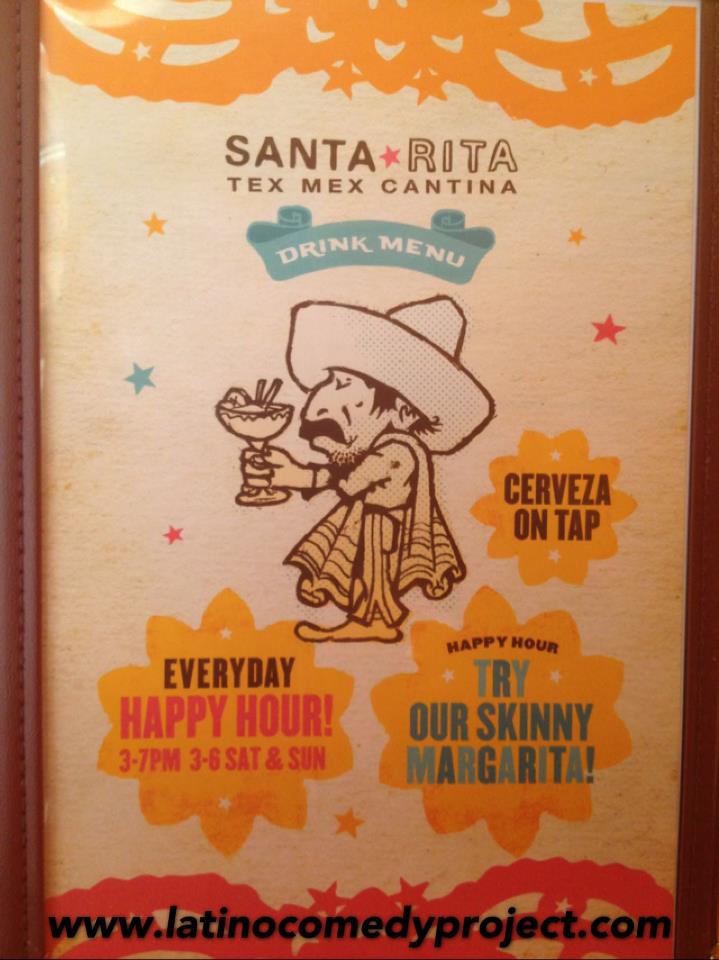Stereotypes In Food And Film

Stereotypes appear both in food and film. Sometimes they are employed for humor or satire and at other times they are a pejorative representation of people and places. In this essay I will describe how some Tex- Mex food is stereotypic, how US films depict Mexicans and Mexican Americans stereotypically, and how Chicanos, Mexican Americans, deal with stereotypes in our food and in our on-screen depictions.
The term, Tex-Mex, applies to restaurant format food with origins in Texas in the early 1900′s. As one walks into most Tex-Mex restaurants, the decor is that of a tourist curio shop: burros/donkeys, sarapes, sombreros and eroticized Latina dancing ladies. T he Tex-Mex restaurant format is one that has enjoyed dizzying success: a combination of fat-laden beans, highly seasoned rice, assembly-line corn tortillas and plenty of gooey, industrially processed cheese.
he Tex-Mex restaurant format is one that has enjoyed dizzying success: a combination of fat-laden beans, highly seasoned rice, assembly-line corn tortillas and plenty of gooey, industrially processed cheese.
Although not all Tex-Mex food is pejoratively stereotypic, much of it is. Stereotypes paint those who are culturally distinct and removed from what we know, in flat, one dimensional terms that allow us to escape from having to encounter them as real human beings. They become the “other.” Every group has stereotypes of the other. It is one way that we make sense of otherness when we cannot or do not want to make the effort to fully engage in meaningful encounter. Many pejorative stereotypes are intended to be demeaning but in a covert, “wink, wink” manner, often disguised as humor. These stereotypes are implied in the food itself: an inordinate amount of fat, use of chile only for the heat, and inclusion of beans prepared with no reference to taste. These three characteristics of much Tex-Mex food are based on three pejorative stereotypes and each stereotype has a racial slur associated with it, “greaser” being one of them. You can guess the other two. They are as facile and inauthentic as the stereotypic images on the menus that announce them.
These stereotypes are implied in the food itself: an inordinate amount of fat, use of chile only for the heat, and inclusion of beans prepared with no reference to taste. These three characteristics of much Tex-Mex food are based on three pejorative stereotypes and each stereotype has a racial slur associated with it, “greaser” being one of them. You can guess the other two. They are as facile and inauthentic as the stereotypic images on the menus that announce them.
Films are important conveyors of the stereotypes found in food. “Bronco Billy and the Greaser,” a 1914 film, depicts the deeply held derogatory “greaser” stereotype that I believe is at play in some circles even today.
“The Bronze Screen,” a 2002 documentary produced and directed by Nancy De Los Santos, Susan Racho, and Alberto Dominguez, does a masterful job of tracing stereotypes in US films. From silent movies to urban gang films, stereotypes of the Greaser, the Lazy Mexican, the Latin Lover and the Dark, Eroticized Spitfire Lady are examined. I find it interesting to find these same images on restaurant menus.
Not all stereotypes are deployed in hateful ways. They are used in comedy to poke fun and be humorously disrespectful. The Latino Comedy Project in Austin, Texas is notorius for its use of outrageous stereotypes that poke fun at our own Mexican American community. Their work raises stereotypes to new, insulting heights, all the while injecting gut-splitting, laughter into difficult political issues like immigration, racism and education.  In Chicano video it is Luis Valdez who first deployed stereotypes in his El Teatro Campesino productions to keep spirits up and entertain in the picket lines of the United Farmworkers with Cesar Chavez. The Lazy Mexican, Burros and Beaners found their way onto the stage and later onto video as larger than life stereotypes, turned on their head, deployed to say, let’s not take this too seriously, let’s laugh at ourselves, refresh, renew and take on the fight for human rights.
In Chicano video it is Luis Valdez who first deployed stereotypes in his El Teatro Campesino productions to keep spirits up and entertain in the picket lines of the United Farmworkers with Cesar Chavez. The Lazy Mexican, Burros and Beaners found their way onto the stage and later onto video as larger than life stereotypes, turned on their head, deployed to say, let’s not take this too seriously, let’s laugh at ourselves, refresh, renew and take on the fight for human rights.
Besides using stereotypes for humor in films, Chicano filmmakers most often steer clear of them completely and focus instead on depicting the shades and nuances of what it means to be a Mexican American in a complex, modern society. Laura Varela, Jim Mendiola, Ray Santisteban, Lourdes Portillo, Sylvia Morales are some of the many Chicano filmmakers who present authentic, full-blown stories.

The culinary counterparts to Chicano filmmakers are the many small barrio restaurants that serve authentic Texas Mexican food, the type that is enjoyed in Mexican American homes. Chef Yuli Sandoval, chef/owner of Alex’s Tacos in Seguin, Texas, cooks beans that are slow-roasted to develop flavor. She is adamant that high fat hurts the taste and that it is bad for you. She appreciates the differences in taste and aroma that ancho, guajillo, pasilla and other chiles offer. This is her Nopalitos con Chile Guajillo dish, certainly a far cry from the greasy dishes served in the curio Tex-Mex restaurants.
In their small restaurants, chefs like Sandoval offer a refreshing twist away from the caricatured, stereotyped food. In the hands of Chicana, Chicano artists, both food and film offer a delicious and rich aesthetic experience.
1 thought on “Stereotypes In Food And Film”